#6th Duke of DEvonshire
Explore tagged Tumblr posts
Text
In 1840, Joseph Paxton’s Great Conservatory was completed after four years.
‘The concept was vast. The building was 84m long, 37m wide and 19m high, the largest glass building in England before the erection of Paxton’s subsequent marvel, the Crystal Palace in London in 1851. Inside there was room for two carriages to pass on the main thoroughfare, and stairs, hidden by ascending rocks, led to a gallery from which you could inspect the highest branches of the exotic palms and other trees flourishing there. There were ponds full of aquatic plants, rocks, mosses, ferns and brilliantly coloured flowers in a tropical climate.
To create this climate there were eight underground boilers fuelled by coal which arrived by underground rail wagons. A short length of the tunnel is now open from the Coal Hole entrance. The boilers fed a seven-mile maze of 6-inch hot water pipes. In winter, it took 300 tons of coal to fuel the boilers. The boiler fumes escaped through flues laid along the ground to a chimney up in Stand Wood, well out of sight of the garden.
During and after the First World War (1914-18), there was not enough coal to heat the conservatory and many plants died. Because of the expense of restoring the now semi-derelict building and bearing in mind the huge cost of maintaining and heating it, the Great Conservatory was demolished in 1920, leaving only the supporting walls as a lasting memorial to this extraordinary building.
The Maze was established in 1962 within the walls of the former Great Conservatory by the 11th Duke.’




5 notes
·
View notes
Link
William George Spencer Cavendish, 6th Duke of Devonshire,, styled Marquess of Hartington until 1811, was a British peer, courtier, nobleman and Whig politician....
Link: William Cavendish, 6th Duke of Devonshire
#William Cavendish#6th Duke of Devonshire#birthday#born today#famous birthday#famous birthdays#1790#May21
0 notes
Text
The Devonshire Parure

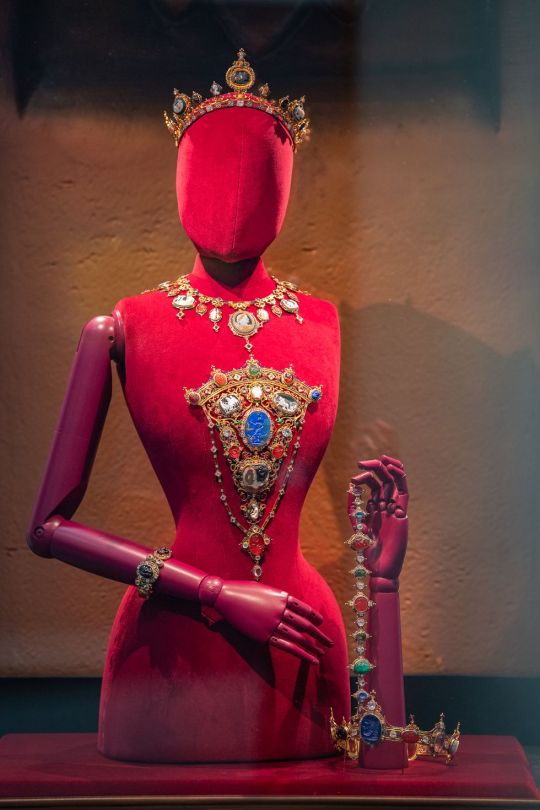
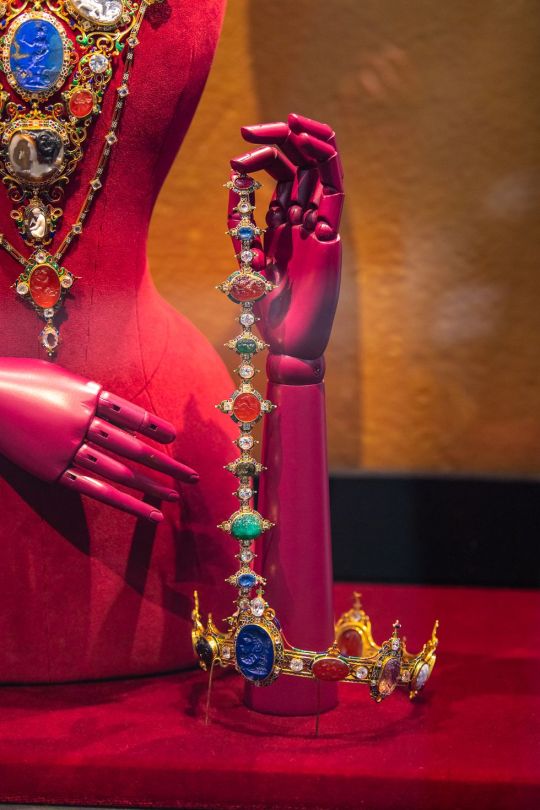
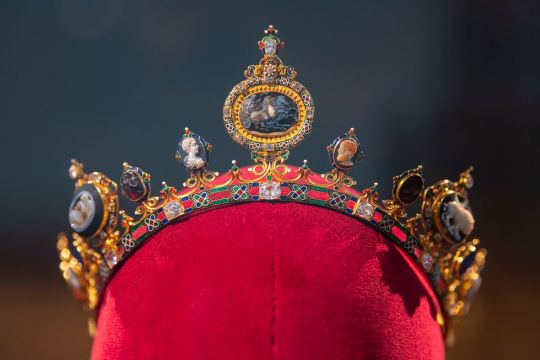
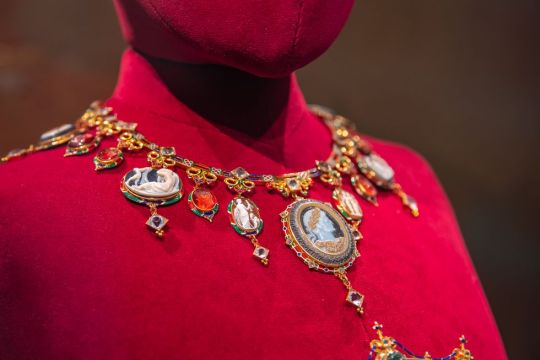
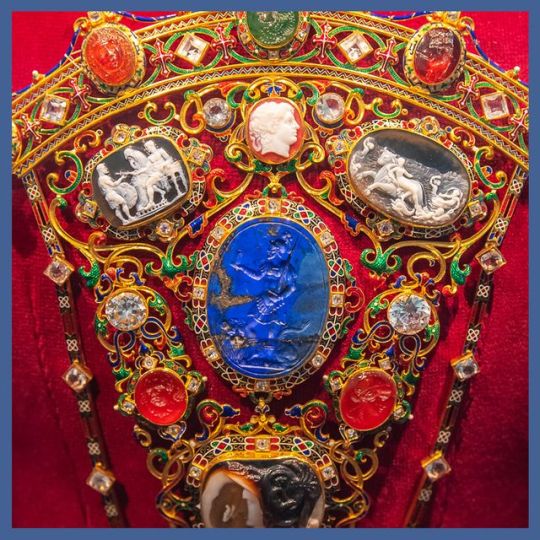
The Devonshire Parure consists of a coronet, diadem, bandeau, comb, necklace, stomacher, and bracelet. It was commissioned by the 6th Duke of Devonshire for Countess Granville, the wife of his nephew, to wear while accompanying him to Moscow for the coronation of Tsar Alexander II in 1856.
Made and designed by C.F. Hancock with input from Sir Joseph Paxton, the parure incorporates 88 cameos and intaglios from the 2nd Duke of Devonshire’s extensive carved gem collection depicting different Tudor monarchs. It includes carnelian, amethyst, garnets, emeralds, sapphires, onyx, jacinth, lapis lazuli, plasma, sardonyx and diamonds all set in gold and enamel.
The parure has been featured in Sotheby's Treasures from Chatsworth exhibit and docuseries. When not on tour, the parure is displayed at Chatsworth House, the home of the Duke and Duchess of Devonshire.
Sources: 1 2 3 4 5
#parure#set#jewelry set#jewelry collection#tiara#tiaras#diadem#diadems#coronet#bandeau#comb#necklace#brooch#stomacher#bracelet#carnelian#amethysts#amethyst#garnets#garnet#emerald#emeralds#sapphire#sapphires#onyx#jacinth#lapiz lazuli#plasma#sardonyx#diamond
306 notes
·
View notes
Text
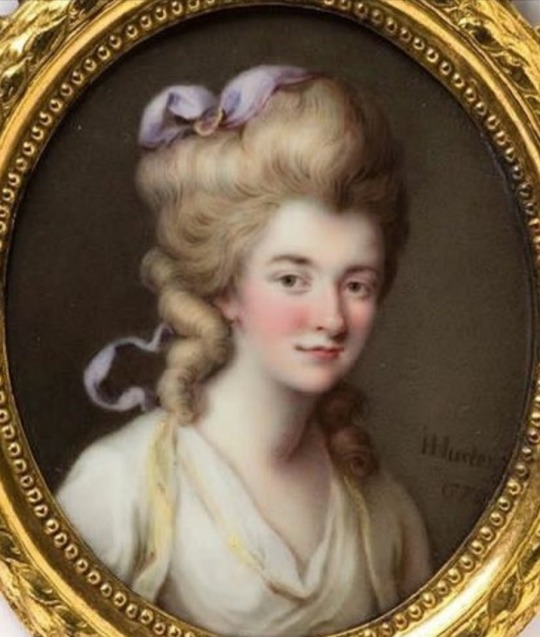


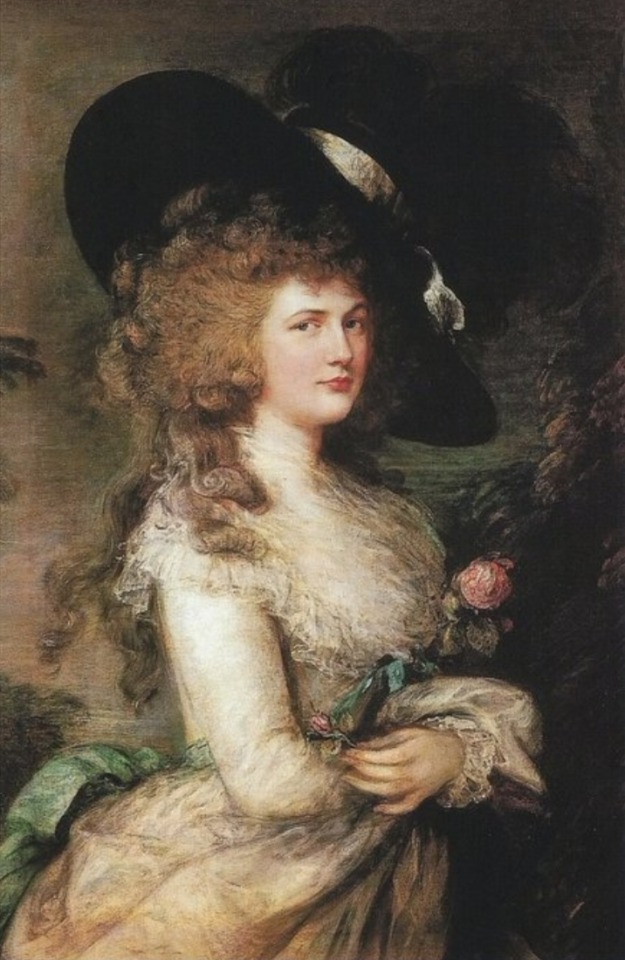
BORN ON THIS DAY:
Georgiana Cavendish, Duchess of Devonshire (née Spencer; 7 June 1757 – 30 March 1806), was an English aristocrat, socialite, political organiser, author, and activist.
Born into the Spencer family, married into the Cavendish family, she was the first wife of William Cavendish, 5th Duke of Devonshire, and the mother of the 6th Duke of Devonshire.
As the Duchess of Devonshire, she garnered much attention and fame in society during her lifetime.
With a preeminent position in the peerage of England, the Duchess was famous for her charisma, political influence, beauty, unusual marital arrangement, love affairs, and socializing.
She was notorious for her gambling addiction, leading to an immense debt.
She was the great-great-great-great aunt of Diana, Princess of Wales.
Their lives, centuries apart, have been compared in tragedy.
She was also a great-great-great-aunt of Elizabeth II by marriage through the queen's maternal grandmother.
#Georgiana Spencer#Georgiana Cavendish#Duchess of Devonshire#Spencer Family#Cavendish Family#Lady Diana Spencer#Diana Princess of Wales#Queen Elizabeth II
52 notes
·
View notes
Text
In light of all the horrid stuff going on in this country lately, I would just like to remind everyone that england isn’t a totally terrible place!!
This country is full of beautiful architecture, art, literature, and natural beauties that are sometimes hard to believe are real.

This is the Major Oak of Sherwood Forest, and is estimated to be as much as 1100 years old!! It is estimated at 23 tons, and is 33 feet in girth/10 metres. According to local folklore, it is the tree where Robin Hood and his merry men slept when in the forest.
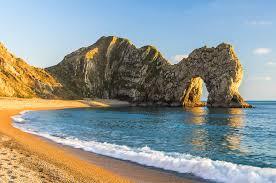
This is Durdle Door, in Dorset. It’s a natural limestone formation on the jurrassic coast, which was deemed “of such international geographic importance” that it was England’s first foray natural World Heritage site with UNESCO in 2001, joining the Grand Canyon and the Great Barrier Reef (visit-dorset.com)
As for architecture, we have the iconic Highclere Castle

Most well known for its use in iconic historical drama Downton Abbey, first written records of the Highclere estate date back to the year 749 when the estate was granted to the bishops of Winchester. In the late 14th century the bishop of Winchester William of Wykeham built himself a palace on the property, and was taken by Edward VI during the reformation in 1551. It was then granted to the Fitzwilliam family, rebuilt in 1679 by then owner Sir Robert Sawyer, who then bequeathed it to his daughter Margaret, first wife to the 8th earl of Pembroke, Thomas herbert, and it remains in the hands of the Herbert family to date, albeit the branch that resulted in the current Earl of Carnarvon. It was redesigned in the years 1842-49 to the facade we know today. (Quick side note, I am directly related to the herbert family through my great grandfather, so carnarvon I’m coming for you watch out)
We also have of course, the ever iconic Chatsworth house

IYKYK. Jk this incredible house is most well known for its use as Pemberley, the Derbyshire residence of Mr Darcy in the 2005 production of Pride and Prejudice (the best film ever made thank you very much).
The Manor of Chetesuorde is listed in the Domesday Book of 1086 as property of the crown in the custody of William de Peverel. Chatsworth ceased to be a large estate until the 15th century when it was purchased by the Leche family. They enclosed the first park and built a house on what is now the south east part of the gardens. The lands were sold in 1549 to Sir William Cavendish, husband of Bess of Hardwick (who was the “keeper” of Mary Queen of Scots while imprisoned. Also apparently her grandson married ANOTHER of my ancestors so I’m related to her too?? What the fuck I need to stop learning family history on the fly). Bess began to build her own home on the property from 1553 to the 1560s.
The home was renovated a truly mindboggling amount of times, as is the amount of times it changed hands. So I’ll keep it simple. A great number of important changes were made by the 4th duke of Devonshire, greatly changing the layout of the home. His son would marry Georgiana Spencer, 4 times great aunt of princess Diana (and YET ANOTHER RELATIVE OF MINE! From another branch of the family!! I need to call my mother. And update my ancestry.com).
In 1811 the 6th duke of Devonshire inherited Chatsworth, and proceeded to transform it into the wonderful beacon of regency romance we know and adore today over the course of his stewardship over the property.
These are only four incredible natural and historical landmarks in England. There are so many more that I could spend 3 life times researching!! (And so many more that have nothing to do with my family history, I promise. Swear I wasn’t doing this on purpose lmao)
This country can be a fucking nightmare, but it’s also a beautiful country with incredible sights and history, and I think we do ourselves a disservice when we forget that. It’s okay to love England (I fucking adore this country you have no idea, wouldn’t be running a blog if I didn’t!), you aren’t a bad person or supporting the bad shit we’ve done if you are proud of being English.
Because don’t get me wrong this country has perpetrated some of the worst shit in history, but we’ve also contributed some of the most important literature and scientific discoveries ever!!
Mary Anning revolutionised the field of paleontology!! Mary Shelley started the entire sci fi genre. Steven hawkin, Charles Darwin, Dorothy Hodgkin and Rosalind franklin discovered DNA! Isaac Newton, William Blake, John Keats, Byron, Alan Turing, Branwell, Charlotte, Emily, and Anne bronte, Dante Gabriel Rossetti, John Everett Millais, John William Waterhouse, to name a few merely off the top of my head!
England can be a wonderful place, and our heritage can be incredible and a legacy to be truly proud of. It would not do to forget, however, that a lot of our history would not have been possible without queer and ethnic minority groups. We all know a good deal of English wealth came from the slave trade, female scientists and artists often had credit for their work stripped from them and given to husbands or even strangers, and a good number of our most influential scientists and artists were very notably queer who were treated incredibly poorly and sometimes killed, and these are facts that can and do exist simultaneously.
Our heritage is wonderful, but it is still being made today. Things that we do now will be landmark events for our descendants, and it is our duty to do better for this country than our ancestors.
#long ass post sorry#I’m In A Mood today#apologies for the absolutely bizarre turn into my family history I genuinely did not expect to be related to like everyone involved in this#i severely underestimated how intertwined the nobility is#I would love to chat with anyone about some fascinating bits of English history they know and am happy to elaborate on anything I possibly#can!#politics#english history#chatsworth house#highclere castle#dorset#sherwood forest#english culture#trans rights#durdle door#can’t tag everything or I’ll be here all day#Admin Roe
51 notes
·
View notes
Note
for the History ask game- asking for 1,3, 13, 14, 20,27, 28, 29, 30? - antebellumite
woahhhhhhh thank you for the ask!
1. Who's my fav?? CHARLES TALBOT DUKE OF SHREWSBURY!!!!
3. What is your country most infamous for in history? Well... America has uh.. there is a LOT of shit that has been done. Can't just name one. Slavery, displacement of Natives, massacres, etc.
13. random thing about random historical person(people) in random era. UH uH ujh least crazy England Restoration Era story: Charles Sackville and his pookie Charles Sedley pulled up to a balcony naked, mimicked very lewd things(i like to think they actually fucked[see: homosexual], but people think they were just 'demonstrating sex'), blasphemed😨🤓😤🥶🙏🙏, and drank a toast to king Charles with wine Sedley dipped his penis in.
14. why do I like history?? It's just... idk cuz it's like we'll never know the full story, their full person, every single detail of their life, their thoughts, who they met and who they didn't (but more importantly who they fucked and who they didn't) and I get to fill in all those blanks with either logical guesses or the craziest AU EVER??? But also because i get to learn about what made this country what made that country why is the government like this yada yada.
20. History crush? CHARLES TALBOT DUKE OF SHREWSBURY LETS GOOOO!! HE IS SO GIRLFAILURE 😤😤
27. Fav What If? I have too many but heres one: WHAT IF Frederick the Great did not get his ass saved by Petey the third. Prussia fuckin loses. what happens then?
28. DREAM TEAM?? Oh my shit theres so mANY! Honorable mentions: The Great Triumvirate and the Cabal Ministry of Charles II of England. Okay but for my favorite gangbang they don't have a definite group in the history books except they do because William of Orange's ministry or whatever: Thomas Osborne 1st Duke of Leeds, George Savile 1st Marquess of Halifax, Charles Montagu 1st Earl of Halifax, Robert Spencer 2nd Earl of Sunderland, William Cavendish 1st Duke of Devonshire, Charles Talbot 1st Duke of Shrewsbury!1!!111!1, Daniel Finch 2nd Earl of Nottingham, Charles Sackville 6th Earl of Dorset, Edward Russell 1st Earl of Orford, Charles Mordaunt 3rd Earl of Peterborough, Arthur Herbert 1st Earl of Torrington, John Churchill 1st Duke of Marlborough, Henry Sydney 1st Earl of Romney
I know there are other fellas out there working for Orange but this is my gangbang
29. Great historical mystery im interested in???I know nothin about great historical mysteries 😭 idk man history itself is very mysterious since there's a lot we don't know.
30. Ask a question of my own hmmmm... Apart from the 21st century, which time period would you live in?
#woooahoooo#this was such a silly#i liked doing this it made me think#for numero 13 i shuffled through so many scenarios trying to find a very silly one and here we go#literally anything that happened in Restoration England needs to be studied under a microscope#dig up their bones#unanchored ted talks 101#uh#history???#literally don't know what to tag this
2 notes
·
View notes
Note
You have made me ship William Cavendish 6th Duke of Devonshire/Georgiana Darcy, and I have no idea what to do with this
Write fic of it. No, write Lord Byron’s reaction to it via Caroline Lamb having a sulk over her favourite rejected admirer moving on to someone more psychologically stable.
#it could be like a Taylor swift album#‘I can’t believe you’re dating the girl next door’#‘I can’t believe my married ex-lover is angry about her ex dating the girl next door’#Darcy: I think we need to go on vacation somewhere less dramatic
18 notes
·
View notes
Text
Georgiana Cavendish
Born to the Spencer family at Althorp, Georgiana was the eldest of three children born to John, the future 1st Earl Spencer and his wife Margaret Georgiana. Aged just 17, Georgiana married the Duke and became mistress of Chatsworth, Hardwick Hall, Chiswick House and Lismore Castle, as well as the estates at Londesborough and Bolton Abbey in Yorkshire.
Embarking on her marriage full of optimism, Georgiana was described as having a warm and vivacious personality, while her husband was regarded as being more reserved. The new Duchess enthusiastically established herself at the heart of London society, welcoming fellow aristocrats, royalty, actors, playwrights and musicians to her home. She also entertained prominent members of the Whig political party.
In 1782 Lady Elizabeth Foster (1759-1824) and Georgiana began a friendship which would last the rest of Georgiana’s life. Elizabeth, known as Bess, became a companion and support to the Duchess but Bess also had a relationship with Duke.
After nine years of marriage, the Devonshires would celebrate the birth of their first child, Georgiana (1783-1858) known as Little G, who was followed two years later by Harriet (1785-1862), known as Harryo. The sisters were joined by a brother William, known as Hart, who would become the 6th Duke of Devonshire (1790-1858) in 1790.
Sadly Georgiana was denied the opportunity to raise her fourth child, Eliza Courtney (1792-1859) because she had been conceived during an affair with politician Charles Grey (1764–1845). The Duke exiled Georgiana, forbidding her to return until invited and only on the condition that the baby was placed elsewhere. Georgiana was able to see Eliza as she grew up, acting as an unofficial god-parent, but Eliza was only told of her parentage after Georgiana’s death.
After years of ill health and enduring blunt and brutal medical interventions which had impaired her sight and left her weakened, Georgiana’s final illness occurred in March 1806. She died at Devonshire House, the family’s townhouse in Piccadilly, aged just 48.

2 notes
·
View notes
Photo

Arms of The Most Noble William Cavendish, 6th Duke of Devonshire.
17 notes
·
View notes
Text

A Veiled Vestal Virgin
The 6th Duke of Devonshire visited the sculptor's studio in Milan, Italy, on 12 October 1846 on his way to Naples. He ordered the marble sculpture on 18 October, placing a £60 deposit on the following day. The sculpture was ready to be dispatched to England in April 1847, and the Duke appears to have displayed it in Chiswick House, west of London.
It first came to Chatsworth in 1999 and was shown in the Sculpture Gallery where it appeared in the 2005 film 'Pride and Prejudice', starring Keira Knightley and Matthew Macfadyen.
In Ancient Rome, the Vestals were virgin priestesses whose lives were dedicated to the goddess Vesta. They were tasked to look after the sacred fire burning on her altar in the temple of Vesta, and were regarded as fundamental to the safety of Rome. The discovery of a "House of the Vestals" in Pompeii in the 18th century made Vestals a popular subject matter in art over the following 50 years.
4 notes
·
View notes
Text
~chatsworth on film~
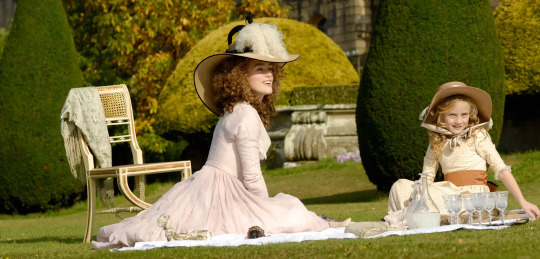
The duchess.
Based on the book by English biographer Amanda Foreman, the 18th century Duchess was played by Keira Knightley, with Ralph Fiennes as the Duke. It also starred Charlotte Rampling. The duchess Georgiana was a source of inspiration in political campaigning, fashion and collecting. She was an early enthusiast of mineral collecting (her collection remains at Chatsworth today). She was also a friend of Marie Antoinette (1755–1793), and as a result promoted French tastes in art, dress and furniture in England. Her son William Cavendish Spencer, became the 6th Duke of Devonshire, and he added vastly to the collection at Chatsworth. His innovative thinking and partnership with Joseph Paxton developed many of Chatsworth's features that we still enjoy today.
Harvard referencing:
BookBrowse (no date) Georgiana: Duchess of Devonshire by Amanda Foreman: Summary and reviews, BookBrowse.com. Available at: https://www.bookbrowse.com/reviews/index.cfm/book_number/742/georgiana-duchess-of-devonshire (Accessed: 19 September 2023).
The Duchess (no date) Chatsworth House. Available at: https://www.chatsworth.org/news-media/chatsworth-on-film/the-duchess/ (Accessed: 19 September 2023).
The Duchess: The true story of Georgiana Spencer, Lady Diana’s ancestor (2023) EnVols. Available at: https://www.en-vols.com/en/inspirations-en/culture-en/the-duchess-movie-anecdotes (Accessed: 19 September 2023).
Duffield, C. (2020) Here’s what you need to know about the real life of Georgiana Spencer, inews.co.uk. Available at: https://inews.co.uk/culture/film/the-duchess-true-story-georgiana-spencer-real-life-keira-knightley-film-552127 (Accessed: 19 September 2023).
Kantrowitz, B. (2008) Once Upon a Time, a Spencer Married Well, Not Wisely, The New York Times. Available at: https://www.nytimes.com/2008/09/07/movies/moviesspecial/07kant.html (Accessed: 19 September 2023).
3 notes
·
View notes
Text
For anyone who might find the short days of winter a little long, I thought I'd share this excellent letter I've always loved:
Feb 16, 1820
Dear Lady Georgiana
Nobody has suffered more from low spirits than I have done, so I feel for you.
1st: Live as well as you dare.
2nd: Go into the shower-bath with a small quantity of water at a temperature low enough to give you a slight sensation of cold.
3rd: Read amusing books.
4th: Take short views of human life – not further than dinner or tea.
5th: Be as busy as you can.
6th: See as much as you can of those friends who like and respect you.
7th: And of those acquaintances who amuse you.
8th: Make no secret of low spirits to your friends, but talk of them freely – they are always worse for dignified concealment.
9th: Attend to the effects tea and coffee produce upon you.
10th: Don’t expect too much from human life – a sorry business at the best.
11th: Compare your lot with that of other people.
12th: Avoid poetry, dramatic representations (except comedy), music, serious novels, melancholy, sentimental people, everything likely to excite feeling or emotion, not ending in active benevolence.
13th: Do good and endeavour to please everybody of every degree.
14th: Be as much as you can in the open air without fatigue.
15th: Make the room where you commonly sit gay and pleasant.
16th: Struggle little by little against idleness.
17th: Don’t be too severe upon yourself, or underrate yourself, but do yourself justice.
18th: Keep good blazing fires.
19th: Be firm and constant in the exercise of rational religion.
20th: Believe me, dear Lady Georgiana.
Very truly yours, Sydney Smith.
Letter from Sydney Smith to Georgiana Cavendish, daughter of the Duke of Devonshire, 1820.
11 notes
·
View notes
Text
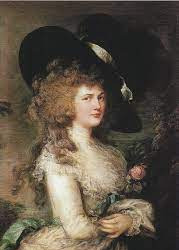

Lady Georgiana Cavendish
1757-1806
Georgiana, Duchess of Devonshire, was one of the most charismatic figures in Georgian society. She was renowned for her style and her involvement in politics. She was the first wife of William Cavendish, 5th Duke of Devonshire, and the mother of the 6th Duke of Devonshire.
Georgiana could indulge her passion for fashion, introducing the vogue for elaborate and tall hairstyles. She also loved gambling, and ran up huge debts over the course of her life. Her husband’s status meant that Georgiana could also be involved in political life. Although women could not vote, Georgiana was very well known and became a central advocate for the Whig Party.
Nast, C. (2021). Who was Princess Diana’s ancestor, Georgiana Spencer? The vivacious society figure who inspired ‘The Duchess’ film. [online] Tatler. Available at: https://www.tatler.com/article/who-was-georgiana-spencer-duchess-of-devonshire.
www.youtube.com. (n.d.). The sad story of Georgiana Duchess of Devonshire. [online] Available at: https://youtu.be/RGquCaZwsJs [Accessed 15 Aug. 2023].
5 notes
·
View notes
Text
I've been volunteering at Hardwick Hall in Derbyshire, and I was talking to another one of the room guides about William Cavendish, 6th Duke of Devonshire. She has an... inordinate fondness for him (told me that she wanted to marry him and have his babies [he died in 1858]). To each their own.
Anyway, she was telling me about his life and... there were a few fairly telling tidbits.
As a child, he was very particular about his food and clothes. He didn't like to be touched and would regularly bite people.
Throughout his life, he would often isolate himself -as a young adult he'd climb out onto the roof where the servants couldn't reach him and read a book, and even when he was known for his lavish parties he had his own chambers that he'd seclude himself in now and then.
A big clue for me was that he apparently had trouble hearing speech when there was a lot of background noise, but could hear music perfectly. (I've no idea how he put up with parties then!)
With all that in mind, I'm pretty sure the guy was autistic, but was able to mask a lot of his social difficulties. Also he was stinking rich, so a little bit of 'eccentricity' was allowed.
We've always been here.

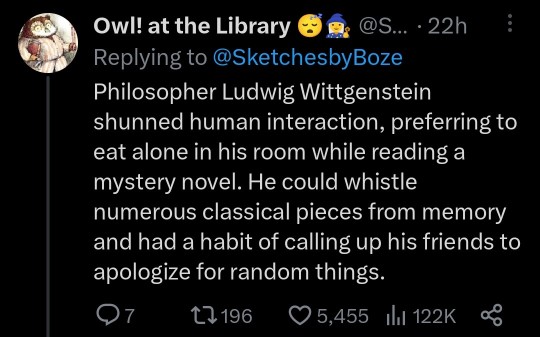
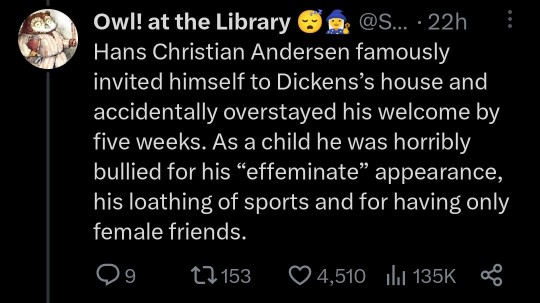


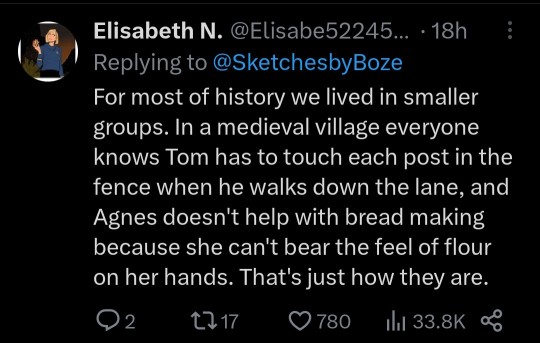




#neurodivergency#neurodiversity in the past#autism#incidentally he's the man that the Cavendish banana is named for#he was also responsible for some of the weirder furnishings at Hardwick#he commissioned a big marble statue of Mary Queen of Scots because he was brought up being told she was imprisoned at Hardwick for a while#(construction started on the Hall three years after she'd been executed)#he had part of one of the dining rooms converted into a menagerie for all sorts of animals#he cut up one of the 16th century tapestries to line one of the stairwells with it
44K notes
·
View notes
Text
B-A-N-A-N-A-S (Prompt 5, Post #7)
Almost every day I have a banana. Whether it is eaten in a bowl of oatmeal, on top of peanut butter toast, or as is. I eat them as they are a good source of potassium, and as a swimmer, I used to get muscle cramps all of the time. Now it is just a healthy habit.
I feel because of my relationship with bananas, it is only right to dive into their origin and history.
Bananas are believed to have originated up to 10,000 years ago in the Malaya Peninsula, Indonesia, the Philippines, and New Guinea (Australian Banana Growers, n.d.).
The original bana has hard seeds and a not-very tasty pulp, but the banana as we know comes from a cross-breeding of two wild varieties, the Musa Acuminata and the Musa Baalbisiana in Africa at about 650 AD (Australian Banana Growers, n.d.).
The banana began to spread around the coast of the Indian Ocean via traders and was eventually brought to the Americas from West Africa by Portuguese traders in the 16th century (Wikipedia, n.d). They began plantations on islands in the Atlantic as Americans began eating bananas in moderate amounts shortly after the Civil War.
The variety of bananas most popular today is the cavendish banana, named after William Spencer Cavendish, the 6th Duke of Devonshire (Australian Banana Growers, n.d.).
But before the cavendish, there was Big Mike or the Gros Michel. This was the variety ofbananas most often found in supermarkets. Due to the bananas monoculture in 1950s, various fungal plagues devastated these bananas. By the 1960s, the Gros Michel was effectively extinct (Mayor, 2017).
As for breeding, the most often used technique is a mutation. Using this technique Honduran Foundation for Agricultural Research has bred a seedless banana that is resistant to both Panama disease and black Sigatoka disease (Wikipedia, n.d.).
However, creating seedless varieties has led to a narrow diversity in bananas. The increase in global warming is also pressuring the species. Efforts to conserve the banana populations by germplasm are led by the International Musa Germplasm Transit Centre in Belgium (Wikipedia, n.d.). Since the Musa varieties are seedless, they are preserved by in vivo, in vitro, and cryopreservation. Wild varieties are conserved in DNA and cryopreserved pollen.

References
Australian Banana Growers. (n.d.). History of bananas: Australian banana growers. History of Bananas. https://abgc.org.au/our-industry-old/history-of-bananas/
Mayer, J. (2018, November 4). Why doesn’t fake banana flavor taste like real bananas? Science Friday. https://www.sciencefriday.com/articles/why-dont-banana-candies-taste-like-real-bananas/#:~:text=But%20Big%20Mike’s%20reign%20couldn,banana%20that%20we%20eat%20today.
Wikimedia Foundation. (2024). Banana. Wikipedia. https://en.wikipedia.org/wiki/Banana#History
0 notes
Text
The Duchess of Devonshire - Georgiana Spencer
Georgiana Spencer, also known as Georgiana Cavendish, the Duchess of Devonshire was a socialite born in 1757, and was know as 'Gee' by many. At 17, she was married to the 5th Duke of Devonshire, William Cavendish, making Georgiana mistress of Chatsworth, Chiswick House, Hardwick Hall, estates at Bolton Abbey, and Lismore Castle. Since William Cavendish's Mother had died 20 years earlier, Georgiana was left with the responsibility of overlooking all houses, servants and residents living in the estate alone.
However, Georgiana became a big part of Society. She took part in many political gatherings, was an uncontrollable gambler, and invited many into her home, including royalty, actors, musicians, and other aristocrats. She was a big fashion icon of her time, setting trends and wearing extravagant clothing that everyone loved and talked about.
Georgiana was also a writer and poet, and when she was 19, she wrote a poem about the public's view on her and called it "to myself". The Duchess then became a mother, but her daughter was not her own, as the Duke (William Cavendish) had had a relationship before marrying Georgiana, which had led to Charlotte being born. Georgiana suddenly became a mother to Charlotte but loved her as her own.
The Duke's arrangement of Georgiana needed to provide a son was still not met after Georgiana gave birth to Georgiana in 1783, and Harriet in 1785. This added to the already rocky marriage between the Duke and Duchess. Although loved by society, Georgiana found herself to be alone, till she found Lady Elizabeth Foster who she became great friends with. Elizabeth, also known as Bess, was their for Georgiana however, she then became the Duke's mistress. Although Georgiana knew William didn't love her, she was still frustrated and saddened by William taking away Bess from her, and also felt betrayed by Bess herself. Not long afterwards, Georgiana gave birth to her first son, William Cavendish, who would became the 6th Duke of Devonshire.
The Duchess then had an affair with Charles Grey, a politician who she had admired for years, even before her marriage to the Duke. This had then lead to her becoming pregnant with Charles Grey's child. William Cavendish sent Georgiana away to the country, and Bess requested to join her, hopping to rebuild their friendship, which they did. When Eliza, Georgiana and Charles' daughter was born, William said that if Georgiana wanted to keep Eliza, she wouldn't be able to see her other children ever again. This lead Georgiana to give up Eliza to Charles Grey's parents and became Charles' "niece". However, Georgiana visited Eliza in secret as she grew up, and acted as her unofficial god-parent.
Georgiana, Elizabeth, and William lived together till Georgiana's death in 1806. Before her death, she traveled to many places including France, Italy, Germany and Switzerland, and gave her blessing for William and Bess to marry, which they went on to do three years after Georgiana's death.

^ Thomas Gainsborough (1787) Portrait of Georgiana Spencer, Duchess of Devonshire

^ Maria Hadfield Cosway. (1781-1782) Georgiana as Cynthia from Spencer's 'Faerie Queene'

^ A gaming table at Devonshire House. 1791. Thomas Rowlandson.
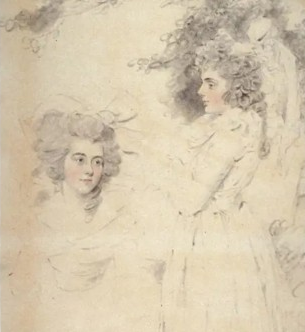
^ Georgiana, Duchess of Devonshire and Lady Elizabeth Foster. C. 1785. John Downman. Chatswoth. Available at: https://www.chatsworth.org/visit-chatsworth/chatsworth-estate/history-of-chatsworth/georgiana-cavendish-duchess-of-devonshire/ (website) (Accessed: February 2024).
^ Chatsworth. (no date) Georgiana Cavendish, duchess of devonshire (1757-1806). Available at: https://www.chatsworth.org/visit-chatsworth/chatsworth-estate/history-of-chatsworth/georgiana-cavendish-duchess-of-devonshire/ (website) (Accessed: February 2024).
^ Sarahmurden (2023) What became of Charlotte Williams, the illegitimate daughter of the 5th duke of devonshire?, All Things Georgian. Available at: https://georgianera.wordpress.com/2015/02/15/what-became-of-charlotte-williams-the-illegitimate-daughter-of-the-5th-duke-of-devonshire/ (Accessed: February 2024).
0 notes